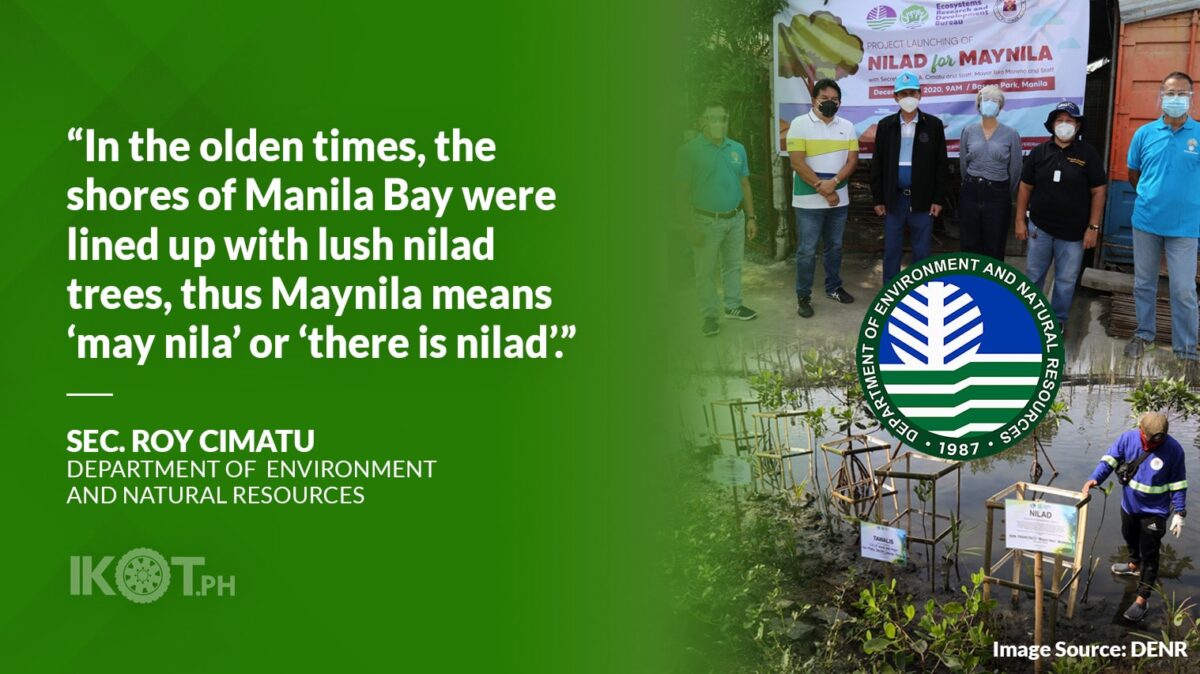The Department of Environment and Natural Resources (DENR), in partnership with the Manila City government, is bringing the Yamstick Mangrove (Scyphiphora hydrophyllacea) or nilad mangrove trees back to Manila Bay through a project in support of its rehabilitation.
Environment Secretary Roy Cimatu recently led the planting of nilad mangrove trees around the BASECO lagoon to kick off the “Nilad for Maynila” project of the DENR’s research arm, Ecosystems Research and Development Bureau (ERDB).
The project aims to regrow along the Manila Bay shores the nilad mangrove plant, after which the country’s capital city was named.
“We lost nilad in Manila primarily because of massive urbanization.”
“Nowadays, we can hardly find nilad growing in this place. We lost nilad in Manila primarily because of massive urbanization,” Cimatu said.
In the olden times, the environment chief said, the shores of Manila Bay were lined up with lush nilad trees, thus Manila or Maynila means “may nilad” or “there is nilad.”
“This is what we hope to relive in Manila to allow this generation and the future ones to also experience the beauty and bounty of the bay,” the environment head pointed out.
Mangrove species such as nilad has the capacity to sequester carbon three to five times more compared to forests in the mountains.
During strong typhoons, an area with bountiful mangrove trees can protect coastal communities against storm surges as these will act as buffers.
“This is our new project cum study on the use of nilad mangrove in re-greening the coast of the city of Manila,” said ERDB Director Henry Adornado. “It is also the ERDB’s contribution and complementary activity to the ongoing Manila Bay rehabilitation efforts of the DENR.”
According to Adornado, the project aims to revert nilad to where it used to thrive.
“Mangroves will help in combating air pollution and provide defense against waves thereby increasing community resilience.”
“Mangroves,” he added, “will also help in combating air pollution and provide defense against waves thereby increasing community resilience.”
Around 150 planting materials consisting of earth-balled nilad from Quezon province, and its close associate, tawalis and the endangered gapas-gapas, were planted around the lagoon.
“We used earth-balled materials because these have higher survival rate compared to seedlings which grow in nurseries,” said Adornado.
Aside from BASECO, ERDB has identified other possible planting sites for the nilad. These are the areas behind the sewage treatment facility in Roxas Boulevard and H20 Hotel.
Also present at the project launch were DENR Undersecretary for Policy, Planning and International Affairs Jonas Leones, Manila City Vice Mayor Honey Lacuna representing Mayor Isko Moreno, Manila Department of Public Services Director Kenneth Amurao, and Barangay 649, Zone 68 Chair Diana Espinosa.

